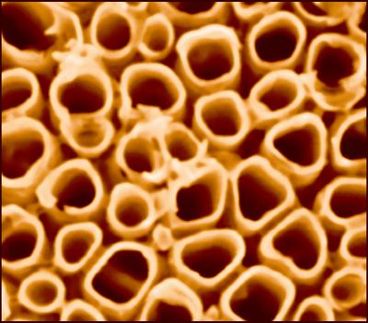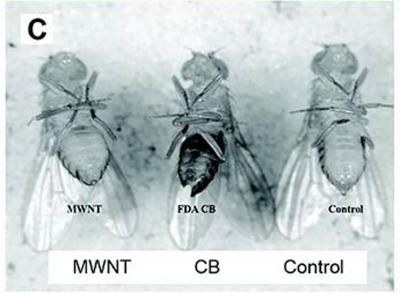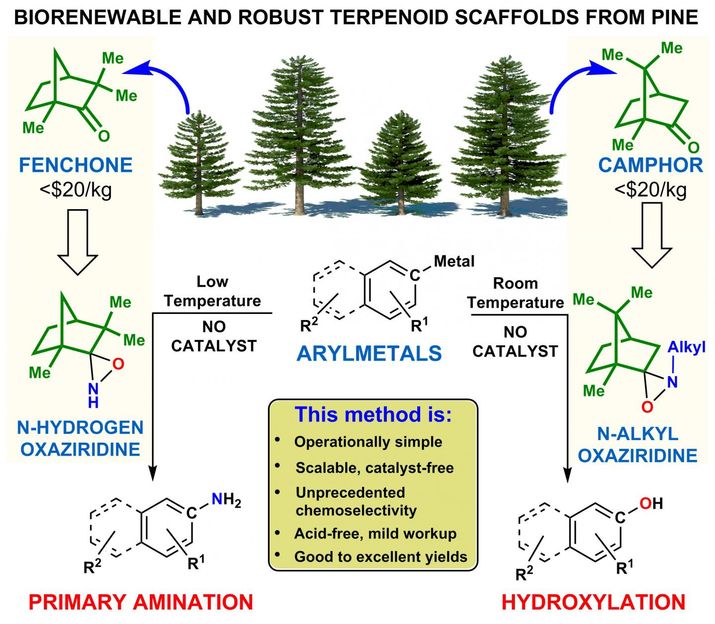Nanoparticles used in common household items caused genetic damage in mice
titanium dioxide (TiO2) nanoparticles, found in everything from cosmetics to sunscreen to paint to vitamins, caused systemic genetic damage in mice, according to a comprehensive study conducted by researchers at UCLA's Jonsson Comprehensive Cancer Center.
The TiO2 nanoparticles induced single- and double-strand DNA breaks and also caused chromosomal damage as well as inflammation, all of which increase the risk for cancer. The UCLA study is the first to show that the nanoparticles had such an effect, said Robert Schiestl, a professor of pathology, radiation oncology and environmental health sciences, a Jonsson Cancer Center scientist and the study's senior author.
Once in the system, the TiO2 nanoparticles accumulate in different organs because the body has no way to eliminate them. And because they are so small, they can go everywhere in the body, even through cells, and may interfere with sub-cellular mechanisms. The study appears this week in the journal Cancer Research .
In the past, these TiO2 nanoparticles have been considered non-toxic in that they do not incite a chemical reaction. Instead, it is surface interactions that the nanoparticles have within their environment - in this case inside a mouse - that is causing the genetic damage, Schiestl said. They wander throughout the body causing oxidative stress, which can lead to cell death. It is a novel mechanism of toxicity, a physicochemical reaction, these particles cause in comparison to regular chemical toxins, which are the usual subjects of toxicological research, Schiestl said.
"The novel principle is that titanium by itself is chemically inert. However, when the particles become progressively smaller, their surface, in turn, becomes progressively bigger and in the interaction of this surface with the environment oxidative stress is induced," he said. "This is the first comprehensive study of titanium dioxide nanoparticle-induced genotoxicity, possibly caused by a secondary mechanism associated with inflammation and/or oxidative stress. Given the growing use of these nanoparticles, these findings raise concern about potential health hazards associated with exposure."
The manufacture of TiO2 nanoparticles is a huge industry, Schiestl said, with production at about two million tons per year. In addition to paint, cosmetics, sunscreen and vitamins, the nanoparticles can be found in toothpaste, food colorants, nutritional supplements and hundreds of other personal care products.
"It could be that a certain portion of spontaneous cancers are due to this exposure," Schiestl said. "And some people could be more sensitive to nanoparticles exposure than others. "I believe the toxicity of these nanoparticles has not been studied enough."
Schiestl said the nanoparticles cannot go through skin, so he recommends using a lotion sunscreen. Spray-on sunscreens could potentially be inhaled and the nanoparticles can become lodged in the lungs.
The mice were exposed to the TiO2 nanoparticles in their drinking water and began showing genetic damage on the fifth day. The human equivalent is about 1.6 years of exposure to the nanoparticles in a manufacturing environment. However, Schiestl said, it's not clear if regular, everyday exposure in humans increases exponentially as continued contact with the nanoparticles occurs over time.
"These data suggest that we should be concerned about a potential risk of cancer or genetic disorders especially for people occupationally exposed to high concentrations of titanium dioxide nanoparticles, and that it might be prudent to limit their ingestion through non-essential drug additives, food colors, etc.," the study states.
Next, Schiestl and his team will study exposure to the nanoparticles in mice that are deficient in DNA repair, to perhaps help find a way to predict which people might be particularly sensitive to them.
Other news from the department science
These products might interest you

NANOPHOX CS by Sympatec
Particle size analysis in the nano range: Analyzing high concentrations with ease
Reliable results without time-consuming sample preparation

Eclipse by Wyatt Technology
FFF-MALS system for separation and characterization of macromolecules and nanoparticles
The latest and most innovative FFF system designed for highest usability, robustness and data quality

DynaPro Plate Reader III by Wyatt Technology
Screening of biopharmaceuticals and proteins with high-throughput dynamic light scattering (DLS)
Efficiently characterize your sample quality and stability from lead discovery to quality control

Get the chemical industry in your inbox
By submitting this form you agree that LUMITOS AG will send you the newsletter(s) selected above by email. Your data will not be passed on to third parties. Your data will be stored and processed in accordance with our data protection regulations. LUMITOS may contact you by email for the purpose of advertising or market and opinion surveys. You can revoke your consent at any time without giving reasons to LUMITOS AG, Ernst-Augustin-Str. 2, 12489 Berlin, Germany or by e-mail at revoke@lumitos.com with effect for the future. In addition, each email contains a link to unsubscribe from the corresponding newsletter.





























































